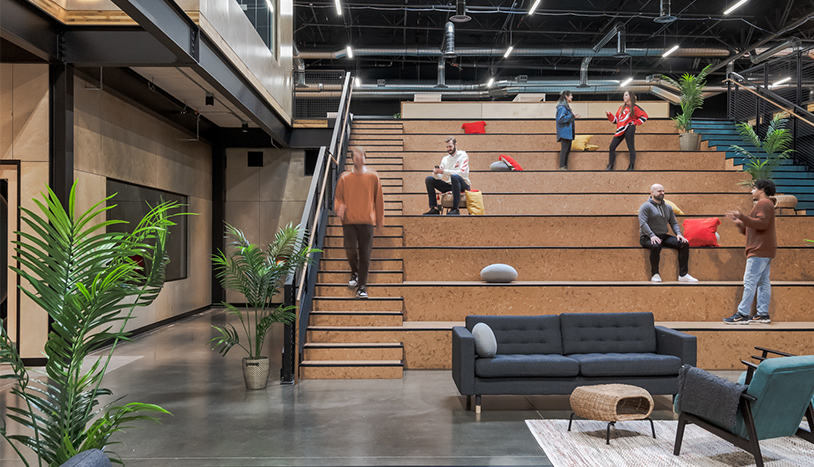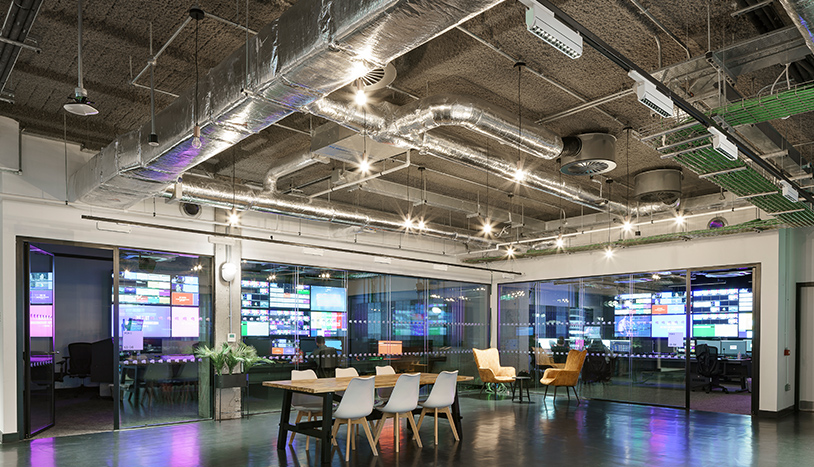A Tale of Two Cities: Riot Games Remote Broadcast Center Journey Continues
If you’re an esports player or fan, Riot Games is a household name. Founded in 2006 with the mission to make it better to be a player, Riot Games released the company’s first game, League of Legends, in 2009. As the title gained momentum, Riot Games expanded its popularity with esports, delivering world-class experiences to players around the world.
In 2020, the company launched an impressive effort to develop Remote Broadcast Centers (RBCs) powered by AWS around the globe. Developed under the codename Project Stryker, the plan was for the RBCs to remotely support the broadcast production of live esports competitions happening anywhere in the world. True to the essence of the fast-paced, adrenaline-driven esports arena, Riot Games didn’t waste any time kicking off this ambitious plan. The company has already completed construction on two RBC locations on accelerated schedules—so how did they do it? According to Allyson Gormley, global operations director of remote broadcast & production at Riot Games, it boils down to trust, transparency, and partnership.

PHASE ONE: DUBLIN
Gormley joined Riot Games’ RBC effort in January of 2020 with the goal of jumpstarting phase one: the site selection, design, and construction of the broadcast center located in Dublin, Ireland. Having worked with Structure Tone Dublin on previous Riot Games fit-outs, Gormley connected with Structure Tone project director Des O’Toole and design partner Henry J Lyons Architects to scout locations.
After finding the perfect building, a former nightclub in Swords, Structure Tone, Henry J Lyons, and Riot Games transformed the five-story structure into a 49,000sf state-of-the-art broadcasting facility equipped to operate 24/7, in just six months. Even with scheduling challenges due to the pandemic, Riot Games’ Dublin-based RBC was up and running for its first broadcast the following January.
PHASE TWO: SEATTLE
Thanks to the Dublin facility’s resounding success, Riot continued full steam ahead. By July of 2022, Gormley and her team were already gearing up for Project Stryker’s next RBC in Seattle, which happens to be the home of another STO Building Group company, Abbott Construction.
Understanding the Riot Games team culture and what building an esports broadcast facility entails, O’Toole suggested Riot Games consider Abbott for the Seattle project. He even arranged for project executive Ed Santander to fly to Dublin to meet with Gormley and see the Dublin facility. Reflecting on the trip, O’Toole and Santander both felt the Dublin and Seattle offices had similar values.
“I thought that Abbott was really closely aligned with what we do and how we do it,” says O’Toole. “Emphasizing the fact that we’re completely client-focused, and we want to help every step of the way.” After spending just one day in Dublin, Santander came to the same conclusion: “Before flying to Dublin, I didn’t know how aligned our Seattle office would be with Structure Tone Dublin, but what I saw there was a natural cultural fit.”
Riot Games agreed. After Santander’s trip, Abbott responded to the Riot Games RFP and in Gormley’s own words, “They nailed it.”
TRUST DURING TRANSITION
Once the job was awarded, Gormley began spending six weeks at a time in Seattle, working with and getting to know Santander and Abbott. Building in a new market with a new construction team, Gormley recalls leaning on her existing relationship with O’Toole to help her and her team make the best decisions for the project.
“I have a ton of trust in Des,” Gormley says. “While things may not have always suited us exactly, I always defaulted to him as the expert in the room.”
O’Toole’s relationship with Riot Games was key during the design phase. When the project team was trying to make the budget align with the vision for the space, Des joined the Abbott crew in Seattle. “Having someone Riot Games knew on our team that they already had a strong working relationship with was invaluable,” Santander says. “Des was the friendly face they could trust at the start.”

BECOMING ONE TEAM
It wasn’t long before the Abbott and Riot Games teams began building that trust themselves. They put effort into laying the foundation of how to work well together
“At Riot Games, we think of ourselves as a sports team— we either win together or lose together,” says Gormley. “Showing up for each other, having each other’s backs, and being transparent is all part of our process and it came so naturally to the Abbott team.”
Abbott and Riot also grew comradery amongst the group with regular joint social outings.“The bond we’ve formed with the Riot Games team is the biggest takeaway for me,” Santander says. “It’s more than just a contractor/ client relationship; it feels like we’re part of their organization.”
For Gormley, the personal relationships made for a more efficient, more enjoyable project. “Building relationships offsite helped us have difficult conversations throughout the job and allowed me to trust in the team’s decisions when I was in a different time zone,” says Gormley. “Plus, the Abbott team uses all our gamer lingo and acronyms now. They’re fully invested!”
The 73,000sf Seattle project, which included the construction of an additional 20,000sf mass timber mezzanine within the existing building, was completed in September of 2023.
Layton Construction may be the next STOBG company to join the organization’s group of esports enthusiasts. Abbott and Riot Games have been working with Layton VDC coordinator, Nathan Shaw, to create 3D visualizations for an exciting next step on the West Coast—talk about power of the platform!
